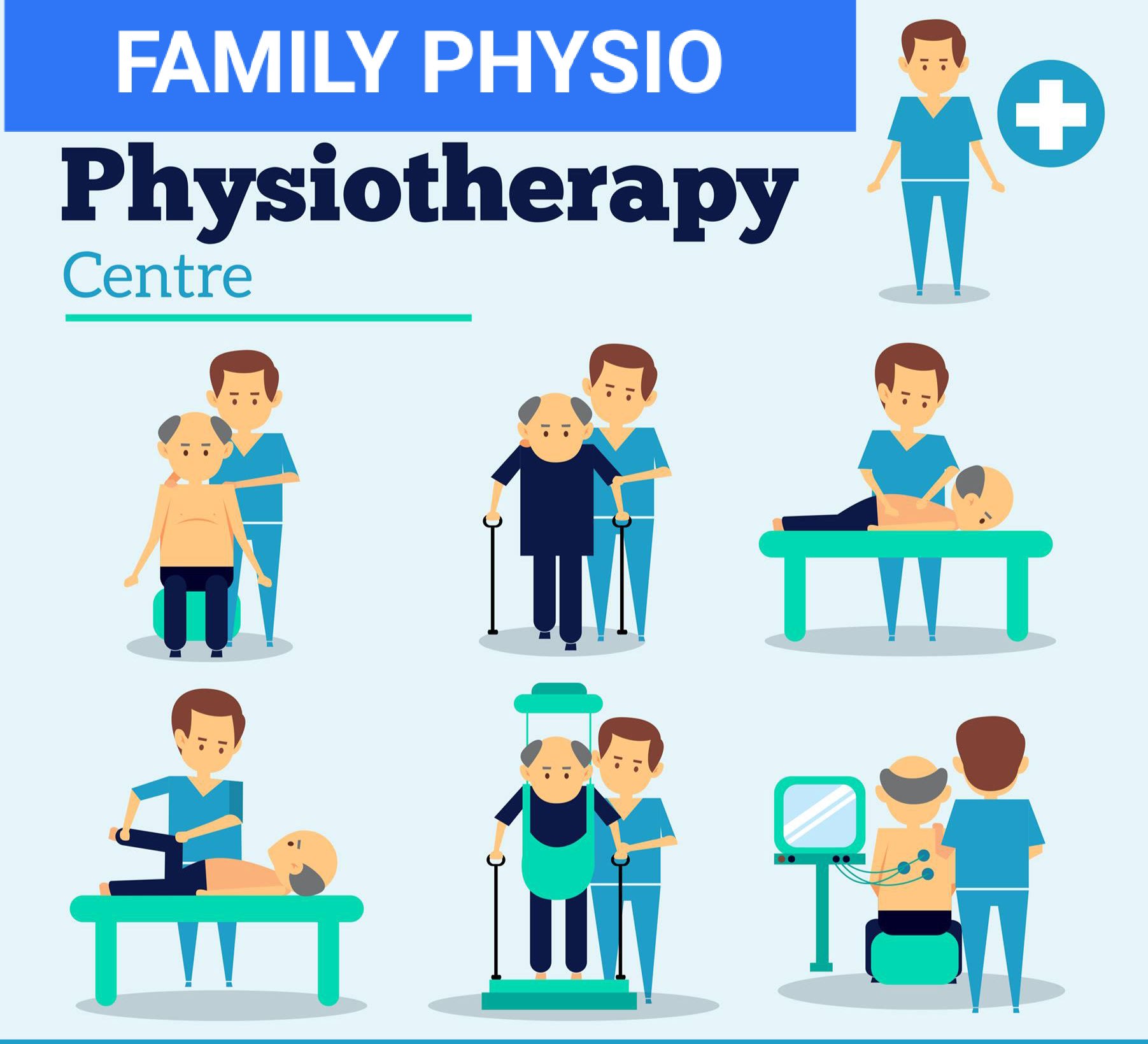FAMILY PHYSIO
About Me
Physical Therapy
Physical therapy, also known as physiotherapy, may include certain exercises, massages and treatments based on physical stimuli (e.g. heat, cold, electrical currents or ultrasound). The aim of physical therapy is to relieve pain, help you move better or strengthen weakened muscles. Another important goal is to show patients what they can do themselves to improve their own health. The treatment isn’t only done in a practice or hospital: you can and should continue doing it at home yourself.
Physical therapy includes
- exercises to actively do certain movements yourself,
- guided, passive movements that the therapist does for you, as well as applying pressure (massage), and
- treatments based on physical stimuli such as heat, cold, electrical currents or ultrasound.
These approaches are used to treat acute and chronic symptoms, and also to prevent future problems or for rehabilitation after long-term medical problems, surgery or injuries.
The most suitable type of physical therapy treatment will depend on the symptoms and specific medical problem, as well as whether the patient has had the pain for a short time or long time, for instance. His or her personal preferences and overall physical fitness will play a role too.
When is physical therapy considered?
Physical therapy can be used to treat things like:
- Back pain
- Problems caused by wear-and-tear or injuries of the muscles, tendons or joints
- Osteoarthritis
- Pelvic floor problems such as incontinence (urine leakage) or pain
- Rheumatoid arthritis
- Cardiovascular (heart and blood vessel) diseases
- Respiratory diseases (affecting the airways)
- Neurological (nerve-related) diseases such as Parkinson’s, stroke or multiple sclerosis
- Developmental problems in children, for instance affecting their muscles or bones
Physical therapy can also be used to help people who need assistance or nursing care – for instance, to practice doing certain movements in a particular order, strengthen muscles and prevent falls.
Go to:
What does physical therapy involve?
Exercises to actively do certain movements make up a big part of physical therapy. These exercises improve mobility (ability to move), coordination and muscle strength. The physical therapist shows you how to do the exercises and then you can do them yourself. Generally speaking, physical therapy sessions mainly involve learning these exercises. The exercises will only help if you regularly do them at home on your own too. As well as doing special exercises, physical therapy often aims to help you increase the overall amount of physical activity in your everyday life, too.
Sometimes passive exercises are used as well. In other words, the therapist moves parts of the patient's body in a certain way. The aim may be to, for instance, improve the ability to move a stiff or locked joint. These guided movements can also prepare the patient's body for active exercises if, for example, they can't move their leg or arm themselves yet.
Other than exercises, massage and hand movements to relax muscles and connective tissue, there are other types of physical therapy treatments that are based on physical stimuli. They include the following:
- Manual lymphatic drainage (massage to drain fluid from the tissues)
- Electrotherapy: Treatment with a weak electric current
- Heat therapy: e.g. using warm baths, warm (fango) mud packs, heat lamps or ultrasound.
- Cold therapy: e.g. using cold packs or cold air.
A number of these treatments can be combined too.
Go to:
What is the aim of physical therapy?
Depending on your medical problem and personal circumstances, the treatment can focus on various goals, such as:
- Improving or restoring the functioning of the body or the ability to move normally
- Improving metabolism and the circulation of blood
- Relieving pain
- Improving coordination and strength
- Compensating for physical disabilities: for example, strengthening the left arm if the right arm can’t move due to paralysis
- Preventing chronic problems
Go to:
Who offers physical therapy?
Physical therapy is carried out by specially trained physical therapists (also known as physiotherapists). Certain elements of physical therapy, such as massages and treatments based on physical stimuli (e.g. heat therapy or electrotherapy) can also be carried out by other professionals. These include masseurs and people who use water to treat medical problems, known as hydro therapists.
Physical therapy can be done in both outpatient and inpatient settings – for instance, in physical therapy practices, hospitals, rehabilitative care centers and nursing homes.
Foremost Yoga Instructor in the local area
Gallery
Our Services
PHYSICAL THERAPY
Physiotherapy
Yoga Therapy
Send a Message
Areas Covered
HOWRAH
Opening Hours
-
-
-
-
-
-
-
-
-
-
-
-
